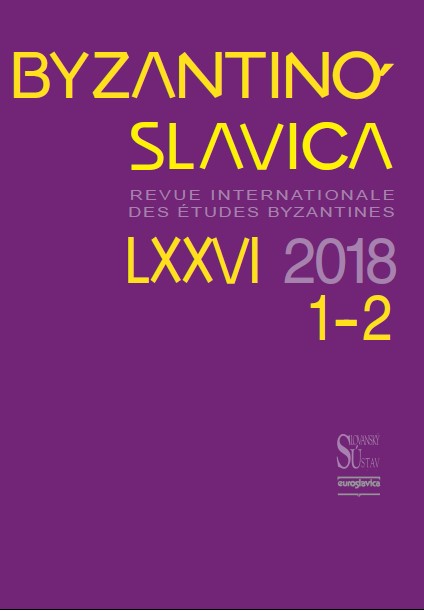Крест-мощевик из собрания М.П. Боткина
Religious cross from the collection of MP Botkin
Author(s): Svetlana M. Novakovskaja-BuchmanSubject(s): Christian Theology and Religion, Fine Arts / Performing Arts, 6th to 12th Centuries
Published by: AV ČR - Akademie věd České republiky - Slovanský ústav and Euroslavica
Keywords: religious cross; Byzantine; iconography; Georgian enamel art;
Summary/Abstract: The cross must have been brought to Russia from Mount Athos by P. I Sevastyanov in 1861, later it was bought by M. P. Botkin and presumably sold to a foreign art collector. Since 1936 the cross has been in Dumbarton Oaks Collection in Washington, D. C. For 150 years scholars considered it to be the work of a Byzantine enamel master, and during the last 50 years it was attributed to a Thessaloniki enamel workshop. It is dated from the 10th to the beginning of the 13th century, primarily to the 12th century. The silver frame of the cross, which is in the Russian Museum collection, was made in the Monastery of Athos in the fi rst half of the 19th century and it was earlier considered lost. The back side of the frame with a carved inscription in Old Georgian mentions the name of the donor – archimandrite Nikoloz. The iconography, the style of the Crucifi xion, the ethnic, non-Greek features of Christ’s face, as well as the ornamentation of the cross, enabled us to reattribute the cross to a Georgian enameller, who at the turn of the 12th century worked in the Byzantine tradition in a workshop in Georgia together with Georgian and Greek masters. This opinion is substantiated by the production technique of black enamel interspersed with blue crystals, which is characterized by the inaccurate distribution of enamel powder and incomplete melting of enamels, an enamel layer up to 3 mm thick, rare cloisons in contrast to the numerous ones on the Byzantine enamels. These are typical features of Georgian enamel art of the second half of the 12th century. The style of depicting Christ with massive body and irregular massive features of the face, creating the individualized “human-like” image, belong to the Georgian variant of monumental style of Byzantine art, oriented towards Classical antiquity, which was formed in the second half of the 12th century. The exaggerated brightness of the enamel and rare cloisons indicate that the cross has not been produced in the workshop in Thessaloniki, as was believed earlier, but it is the work of a Georgian master.
Journal: Byzantinoslavica - Revue internationale des Etudes Byzantines
- Issue Year: LXXVI/2018
- Issue No: 1-2
- Page Range: 280-308
- Page Count: 29
- Language: Russian
- Content File-PDF

